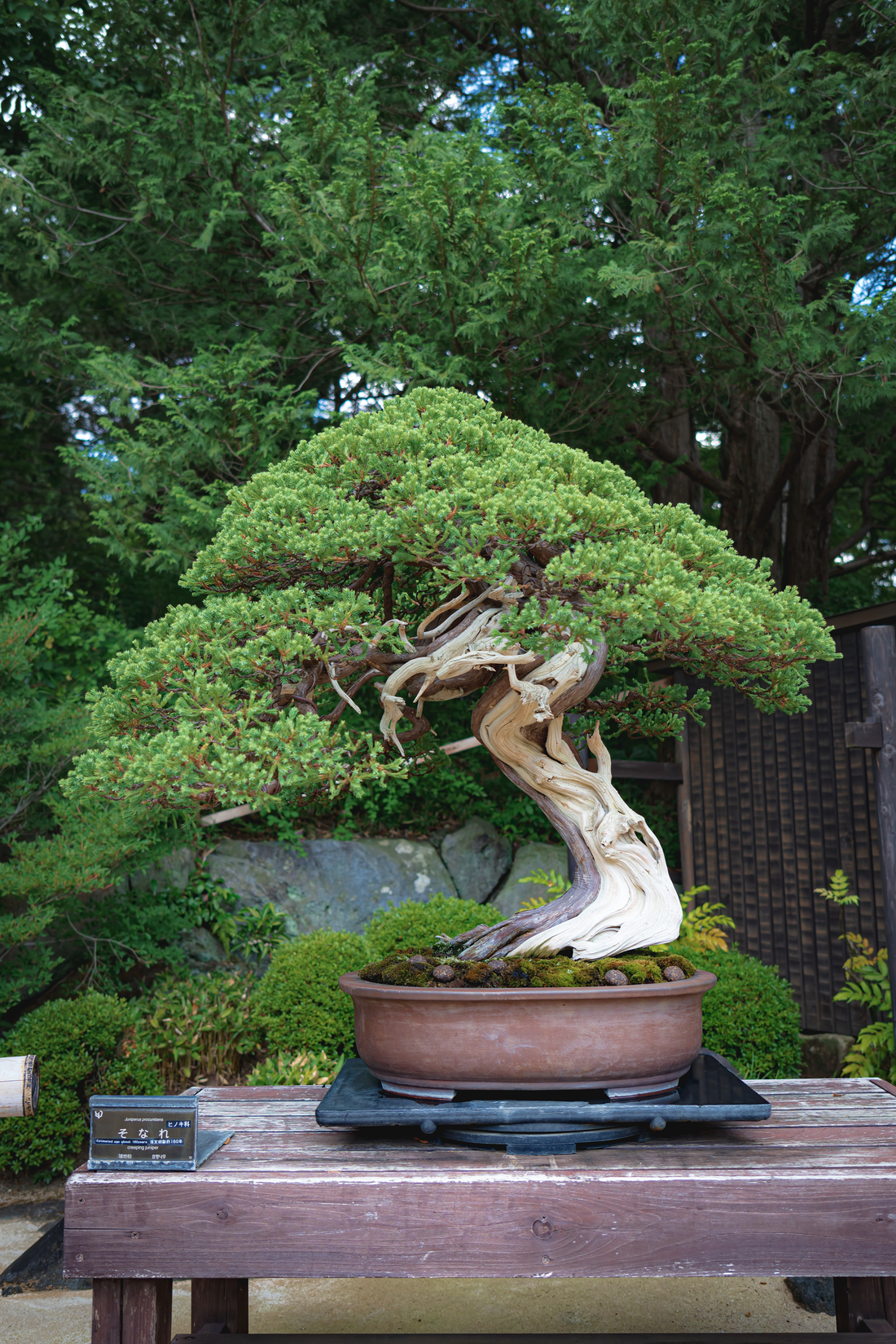The Japanese bonsai tree (盆栽) has become a recognizable image around the world. They conjure up images of finely manicured miniature Zen gardens, and painstaking dedication to their cultivation and maintenance. Although these little trees are pretty famous, their intricate and long history is much less known.
Bonsai art is notably a Japanese practice, but its origins actually came from nearby China’s penjing (盆景) or penzai- although this title didn't come around until many centuries later. The first known records of penjing date back to around 600 - 700 AD and it is believed that the art form itself predates that. This lesser-known horticultural art is similar to bonsai, but it focuses on creating entire miniature landscapes and scenes, rather than just growing a single plant. Like bonsai, a typical penjing piece is potted, usually in a tray instead of a pot, and is not very big. It consists of some plants (which can include bonsai trees), a substrate or soil, rocks, landforms, and miniature figures and structures (such as people and buildings).

During the Chinese Tang Dynasty (618–907 CE), the empire experienced a golden age. With this newfound prosperity as encouragement, they sought to spread their success and ideas across a generally receptive Asia, as well as discover new lucrative trade and resource opportunities. Chinese monks were amongst these migrations and, as they made their way to Japan, the art of penjing came with them. Japanese Zen Buddhist monks quickly adopted and altered penjing creating the bonsai trees we know today.
As time passed, bonsai blossomed in popularity and went through stylistic trends in Japan. Circa the Japanese medieval era (1185 - 1603 AD), bonsai trees grew to become prized symbols of status and power amongst the wealthy and aristocratic. Although they are not explicitly linked historically, some visual similarities can be drawn between penjing pieces and Buddhist Zen gardens- especially when you consider their origins.

Bonsai trees are seen to possess multiple symbolic meanings with their primary meaning being that of harmony between man and nature. The careful maintenance they require speaks to the reciprocity between us and the natural world: the gardener cares for the tree while the tree’s presence offers joy and peace. The tree’s longevity is another symbol which can be interpreted to represent patience and the dignified process of aging.
Because of the time and effort required to grow a bonsai tree, gifting one is interpreted as a deeply symbolic and meaningful gesture. Traditionally, a bonsai tree gift is viewed as an expression of the deep bond between giver and receiver. It is also believed to bring luck and good fortune to the recipient.
Modern bonsai trees are not so different from the ones created in Japan centuries ago. The art form has gone through phases and adaptations to keep up with the modern world, such as changes in size, more complex potting and maintenance methods, and different choice of tree depending on the location in the world, but its core presentation and meaning has mostly endured the centuries.


1 comment
Beautiful & Amazing article , I was thinking for a long time now to start purchasing these Special Trees, but have been intimidated by the price & skills it takes to do so, but I need something like this to help ease stress & things going on in My Life & something like this to build My confidence , this article helped Me hopefully do so in a positive direction moving forward, Thank You Very Much, please keep up the good work & God Bless You All Always.GB 🙏